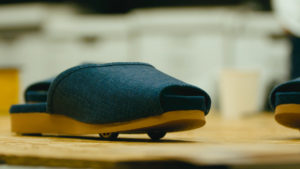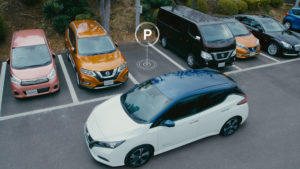Combining the ultimate in traditional hospitality with Nissan’s autonomous driving technology, one Japanese inn is treating guests to some unusual amenities: self-parking slippers, tables and floor cushions.

The ProPILOT Park Ryokan looks like any other traditional Japanese inn, or ryokan. Slippers are neatly lined up at the foyer, where guests remove their shoes.
Tatami rooms are furnished with low tables and floor cushions for sitting.
What sets this ryokan apart is that the slippers, tables and cushions are rigged with a special version of Nissan’s ProPILOT Park autonomous parking technology. When not in use, they automatically return to their designated spots at the push of a button.


First introduced in the all-new Nissan Leaf in Japan in October 2017, ProPILOT Park detects surrounding objects and lets drivers automatically park the vehicle in a selected parking space by pressing a button. The same technology is being used in the amenities at the ProPILOT Park Ryokan during a demonstration to entertain guests and reduce staff workload.
Autonomous parking technology
ProPILOT Park is a fully fledged system that helps drivers park by automatically controlling acceleration, brakes, handling, shift changing and parking brakes to guide the car into a parking spot.
By combining advanced image processing technology using four high-resolution cameras and information from 12 ultrasonic sensors around the car, ProPILOT Park guides the car into a space safely and accurately.

All steering, braking and throttle inputs for various parking maneuvers, such as parallel parking, are automated. The system can automatically identify a parking space around the car so that the driver doesn’t need to set a target parking position. Requiring only three easy steps for activation, this technology liberates drivers from one of the most tedious, and at times the most challenging, tasks of driving.

